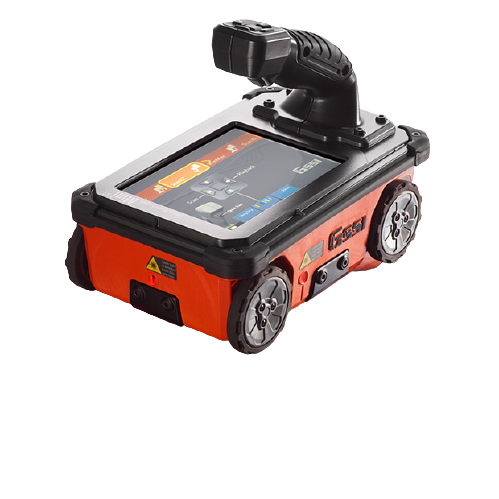RainierGPR Service Areas: Where We Offer Premier Concrete Scanning
RainierGPR Service Areas: Where We Offer Premier Concrete Scanning
Blog Article
Concrete Scanning: A Vital Step In The Direction Of Guaranteeing Architectural Integrity and Safety
In the realm of building and construction and facilities upkeep, the value of concrete scanning can not be overstated. This meticulous procedure holds the key to revealing possible risks hidden below the surface area of apparently strong frameworks. By using advanced technology and methods, concrete scanning works as a pivotal device in ensuring that the stability and safety and security of buildings and bridges are maintained to the greatest criteria. However, beyond its surface-level ramifications, the role of concrete scanning expands far much deeper than fulfills the eye.
Significance of Concrete Scanning
Concrete scanning plays an essential duty in guaranteeing the structural stability and safety and security of buildings and infrastructure jobs. By making use of innovative technologies such as ground-penetrating radar (GPR) and electromagnetic induction, professionals can non-destructively inspect concrete frameworks to detect prospective problems, spaces, ingrained items, and reinforcement design. This process makes it possible for early detection of anomalies that might compromise the security of a structure, avoiding pricey problems and ensuring the security of residents.
Prior to boring, cutting, or coring into concrete, scanning assists determine the precise places of rebar, post-tension cables, and other embedded aspects, lowering the threat of unexpected hits that could lead to architectural weaknesses. Additionally, concrete scanning aids in quality control by confirming the density of concrete covers and discovering any kind of inconsistencies that might affect the total resilience of the framework.
Modern Technology for Concrete Inspection

Advantages of Very Early Discovery
Prompt detection of architectural problems can considerably alleviate threats and guarantee the longevity of construction tasks. By recognizing possible issues early on in the construction procedure, stakeholders can take proactive procedures to address problems prior to they rise right into bigger and more pricey issues. Among the key benefits of early discovery is the prevention of structural failures, which can pose severe safety and security dangers and result in job hold-ups and economic losses.
Additionally, very early discovery permits timely repair services and maintenance, which can assist expand the life-span of the framework. By dealing with issues quickly, building and construction groups can stay clear of costly repairs or also the demand for early replacement of architectural parts. This proactive method not only saves time and money however also boosts the total security and longevity of the building and construction task.
Furthermore, very early detection can boost task preparation and decision-making by supplying stakeholders with useful insights into the problem of the framework. Armed with this information, job managers can make educated selections relating to construction approaches, timelines, and materials, causing more successful and reliable project end results.
Making Certain Structural Stability
Making sure the architectural security of a building task is paramount to its security and durability. Architectural navigate to this website stability refers to the capability of a structure or framework to keep its form and feature under ecological problems and various loads. To achieve this, detailed assessment and tracking of the framework are crucial. Concrete scanning plays an important function in making sure architectural stability by spotting potential issues such as voids, delamination, or reinforcement rust that might jeopardize the stability of the structure in time.
By using advanced scanning technologies like ground-penetrating radar (GPR) and electromagnetic induction, building and construction specialists can non-invasively examine concrete frameworks to recognize locations of worry below the surface. This aggressive strategy permits for the early discovery of flaws or weaknesses, allowing punctual repair services or reinforcement to protect against architectural failures.
Normal concrete scanning during various building and construction stages and throughout the life cycle of a framework can help preserve its stability, mitigate threats, and guarantee the safety and security of residents. By focusing on structural stability with concrete scanning, construction jobs can enhance their strength and longevity, eventually adding to greater security and longevity.
Avoiding Crucial Failings
To safeguard against tragic events, precise surveillance and proactive upkeep are vital in averting important failings within structural frameworks. Detecting prospective problems prior to they escalate is essential to avoid structural failures. Carrying out regular inspections, such as concrete scanning, can disclose covert issues like gaps, cracks, or corrosion that might endanger the integrity of a structure. By using sophisticated scanning modern technologies like Ground Passing through Radar (GPR) or Concrete X-ray, engineers can non-destructively assess the condition of concrete and determine powerlessness that need support or fixing - RainierGPR Service Areas.

Verdict
In verdict, concrete scanning plays a vital role in making certain architectural honesty and security by using advanced technology for early detection of potential concerns. This positive method helps stop important failures and ensures the security of structures. It is vital to Click Here focus on concrete assessment as a conventional practice to protect the durability and safety and security of structures and infrastructure.
Concrete scanning plays an essential duty in making sure the architectural stability and safety of structures and facilities tasks. Furthermore, concrete scanning help in high quality control by confirming the thickness of concrete covers and finding any type of inconsistencies that might impact the total toughness of the structure. Concrete scanning plays an important role in making sure structural stability by detecting potential More Help concerns such as voids, delamination, or support corrosion that might endanger the stability of the structure over time.

In final thought, concrete scanning plays a vital function in guaranteeing architectural honesty and safety by utilizing innovative modern technology for very early detection of prospective problems.
Report this page